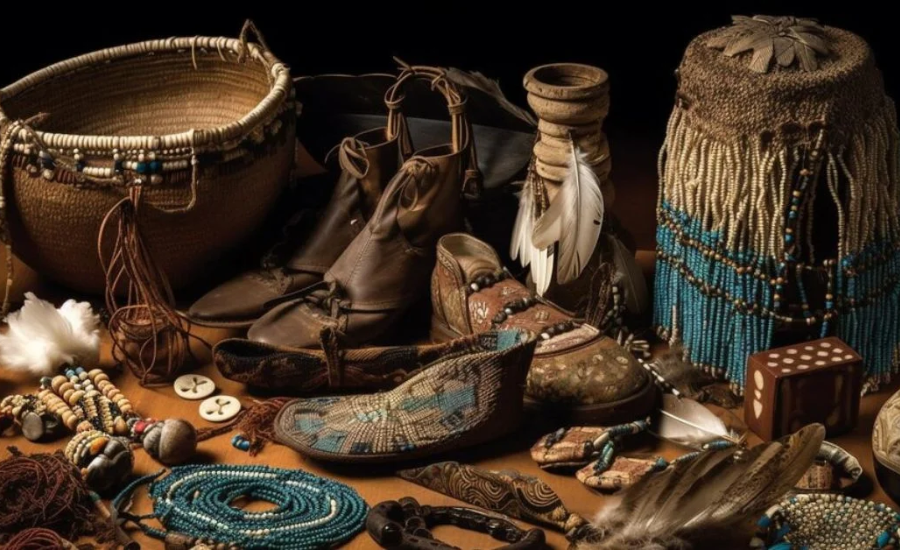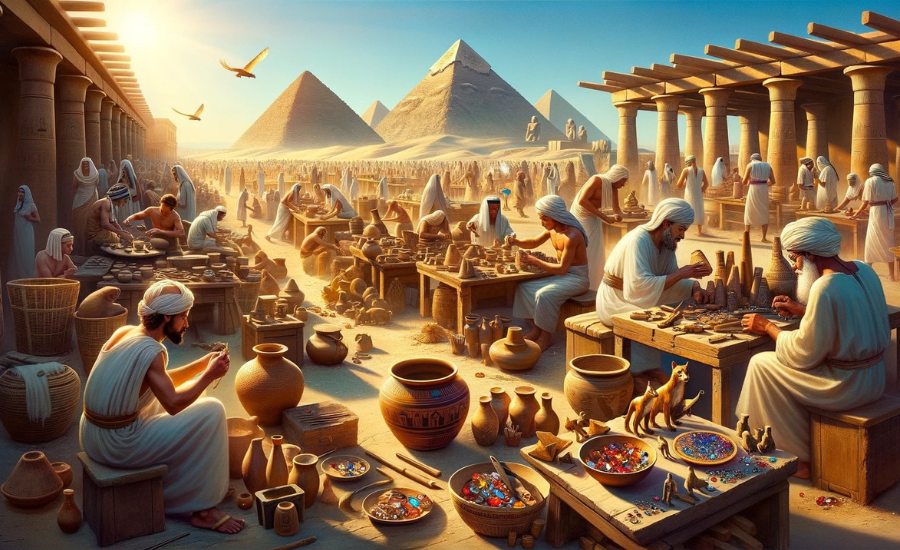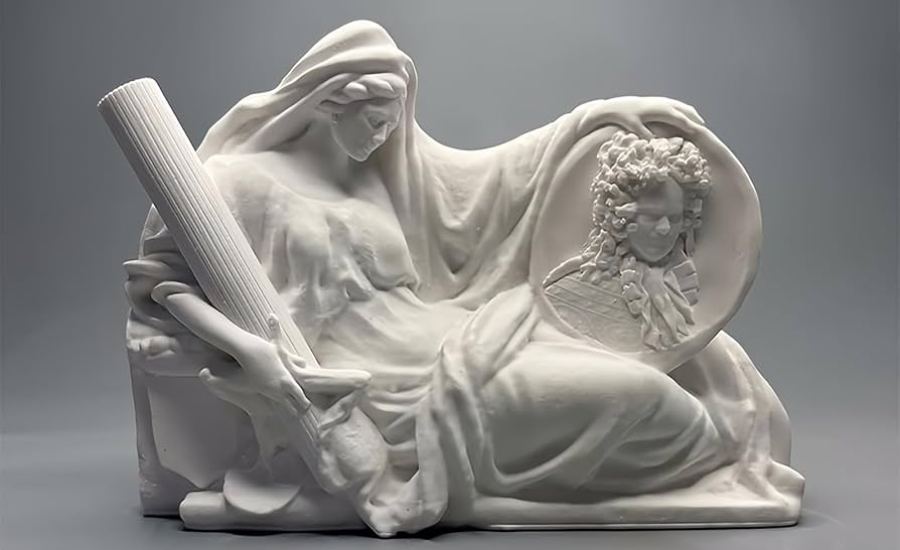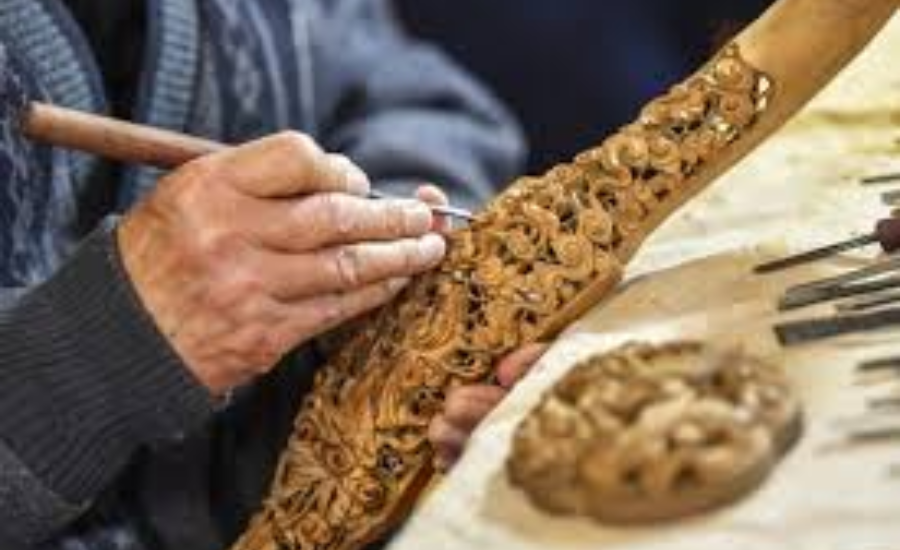Workmanship fills in as a mirror to human culture, catching the center of our convictions, esteems, and lived encounters. From the beginning of time, different types of imaginative articulation have arisen, each offering a novel look into the social orders that made them. Among these, “old craftsmanship” stands apart as a demonstration of the inventiveness and creativity of our progenitors. This article digs into the entrancing universe of antiquated workmanship, investigating its starting points, different styles, and the significant importance it holds in the story of mankind’s set of experiences. By looking at these early creative undertakings, we gain knowledge into how antiquated civilizations imparted, celebrated, and figured out their general surroundings.
Prologue to the Antiquated Expressions
Old expressions include the huge and changed imaginative manifestations of early human civic establishments, spreading over millennia and covering a wide exhibit of mediums and styles. From the earliest cavern drawings by ancient people to the unpredictable models and engineering of old Greece and Rome, old expressions offer a significant window into the lives, convictions, and social acts of our predecessors. These early types of articulation established the groundwork for the advancement of craftsmanship as far as we might be concerned today, serving as tasteful accomplishments as well as indispensable devices for correspondence and narrating.
The Starting Points Of Antiquated Expressions
The starting points of antiquated expressions follow back to ancient times when early people started to offer their viewpoints, encounters, and profound convictions through drawings, carvings, and different types of imaginative creationconvey strict and social convictions. As human social orders advanced and turned out to be more complicated, so too did their imaginative articulations, prompting the improvement of particular styles and procedures that mirrored the exceptional attributes of every progress.
Antiquated Expressions In Ancient Times

Going back over 30,000 years, these works of art portray creatures, hunting scenes, and dynamic images, offering a brief look into the connection between early people and their current circumstances. These works feature the significance of nature and endurance in ancient life, as well as the starting points of human imagination and articulation.
Improvement Of Antiquated Expressions
As human social orders changed from traveling ways of life to settled networks, new types of imaginative articulation started to arise. The improvement of ceramics, models, and design checked critical progressions in imaginative works, mirroring the developing intricacy of social designs and social practices. These early creative accomplishments laid the foundation for the different and modern fine arts that would later arise in antiquated civic establishments across the globe.
Styles In Antiquated Expressions
Antiquated expressions are portrayed by their rich variety, with every civilization fostering its own extraordinary style mirrored by its social qualities, strict convictions, and cultural standards. Beneath, we investigate the absolute most critical and compelling styles of old craftsmanship from around the world, each adding to the rich embroidery of human creative legacy. These styles not just characterize the imaginative accomplishments of their separate civilizations yet in addition give important bits of knowledge into the authentic and social settings in which they were made.
Egyptian Craftsmanship

Egyptian craftsmanship remains as one of the most notable and through sorts of antiquated workmanship, prestigious for its unmistakable style, representative wealth, and profound association with religion and existence in the wake of death.Key Highlights of Egyptian Workmanship
These complex images were a method for correspondence as well as were likewise a type of craftsmanship by their own doing, frequently enhancing sanctuary walls, burial chambers, and landmarks with strict and verifiable stories.
Models & Sculptures
Egyptian figures and sculptures oftentimes portrayed divine beings, pharaohs, and other critical figures in a profoundly adapted and romanticized way. These works were planned as imaginative portrayals as well as objects of love or as means to get a spot in existence in the wake of death. The sculptures were much of the time fantastic in scale, mirroring the significance of the figures they addressed.
Frescoes& Artworks
Commonly found in tombs and temples, Egyptian frescoes and paintings depicted scenes from daily life, religious rituals, and the journey to the afterlife. These vivid and colorful artworks were not just decorative; they held deep religious significance, guiding the soul of the deceased through the afterlife and ensuring their eternal existence.
Greek-Roman& Craftsmanship

Greek and Roman art are closely intertwined, with Roman art heavily influenced by the styles and techniques developed by the Greeks. Both civilizations made significant contributions to the evolution of art, particularly in sculpture, architecture, and pottery. Greek art is renowned for its idealized representations of the human form and its pursuit of beauty and harmony, while Roman art is distinguished by its realism and its innovations in architecture and engineering.
Key Highlights of Greek Craftsmanship
Design: Greek engineering is portrayed by the improvement of the three old-style requests of segments — Doric, Ionic, and Corinthian. These engineering styles affected the plan of sanctuaries, theaters, and public structures, a considerable lot of which have become getting through images of old Greek culture.
Key Elements Of Roman Craftsmanship
Authenticity in Model
In contrast to Greek idealism, Roman sculptures prioritized realistic depictions, highlighting the age, emotion, and individuality of their subjects.
Mosaics
Roman mosaics, crafted from tiny pieces, adorned floors and walls with intricate scenes from mythology, daily life, and nature.
Designing & Engineering
These headways permitted the Romans to develop gigantic and getting-through structures, including reservoir conduits, amphitheaters, and sanctuaries, which stay building wonders right up ’til now.
Chinese Craftsmanship

Chinese craftsmanship addresses one of the world’s longest-constant imaginative practices, with experiences crossing over 5,000 years.Chinese workmanship incorporates a great many structures, from calligraphy and painting to ceramics and models, each adding to the rich embroidery of this old progress.
Key ElementsOf Chinese Craftsmanship
The craft of calligraphy includes the cautious and expressive utilization of brush and ink to make characters that are neat as well as stylishly satisfying. A discipline requires incredible expertise, control, and a profound comprehension of the social and philosophical implications behind the words.
These works of art frequently mirror the craftsman’s internal world and philosophical reflections, with a specific accentuation on the congruity between people and nature. The utilization of ink, with its differing tones and smoothness, takes into consideration a great many expressive conceivable outcomes.
Indian Craftsmanship; Indian craftsmanship is profoundly interwoven with otherworldliness and religion, mirroring the assorted social and strict customs of the Indian subcontinent. With a rich legacy of figures, paintings, and designs, old Indian workmanship plays had a focal impact on the statement of strict dedication, social character, and imaginative development.
Key Elements of Indian Workmanship
Mold: Indian figure is famous for its portrayals of divine beings, goddesses, and legendary scenes, frequently cut in stone or bronze.
These temples are not only places of worship but also masterpieces of architecture and artistic achievement, reflecting the spiritual and cultural values of the communities that created them.
Scaled-down Canvases: Indian little compositions are little, definite show-stoppers that frequently portray scenes from court life, strict stories, and legendary accounts.
Materials And Strategies in Antiquated Artz
Materials and techniques in ancient art varied widely across civilizations, reflecting their available resources and unique cultural practices. The table below summarizes key materials and methods used by several ancient cultures.
Imagery and Topics In Antiquated Artz
Old craftsmanship is profoundly entwined with imagery, where specialists utilize pictures, themes, and subjects to convey significant thoughts and convictions. These emblematic portrayals frequently centered around religion, folklore, nature, and the human experience, filling in as a window into the qualities and perspectives of old societies.
Normal Subjects in Old Artz
Religion and Otherworldliness: Numerous old craftsmanship were made to respect divinities or to act as contributions in strict ceremonies. For instance, the sculptures of divine beings and goddesses in old Greece were creative portrayals as well as filled in as central focuses in love.
Nature: The normal world was an incessant wellspring of motivation for old specialists. In Chinese craftsmanship, scene artworks frequently portrayed amicable scenes of mountains, waterways, and vegetation, mirroring the social accentuation on balance and the interconnectedness of all life. Local American pottery frequently highlighted creature themes, representing the otherworldly association between people and nature.
Human Experience: Antiquated craftsmanship additionally caught scenes from day-to-day existence, giving knowledge into the social and social acts of the time. Greek earthenware, for instance, frequently portrayed scenes of athletic rivalries, feasts, and fanciful occasions, offering a brief look into the regular exercises and cultural upsides of old Greece. Likewise, Egyptian paintings depicted farming exercises, hunting, and different parts of life along the Nile.
Imagery in Antiquated Artz
Chinese Workmanship: Imagery was fundamental to Chinese craftsmanship, with legendary animals like the mythical beast, addressing power and strength, and the phoenix, representing eternality, every now and again showing up in compositions, pottery, and materials.
Egyptian Craftsmanship:Egyptian artwork is rich with symbolic imagery, where each element carries deeper significance. For instance, the ankh symbolized life, while the scarab beetle represented resurrection. Moreover, these symbols not only served artistic purposes but also had protective and spiritual functions for the Egyptians. Thus, their use in art reflects both aesthetic and functional aspects of their culture.
Greek Craftsmanship: In old Greek workmanship, fanciful figures and images assumed a huge part. The The tree wreath symbolized triumph in divine figures and legends.
Old art imagery reflects the beliefs and values of ancient civilizations, revealing their creative achievements and cultural expressions.
The Meaning Of Old Artz In Present-day Times
Old workmanship keeps on applying a significant impact on contemporary craftsmanship, culture, and configuration, filling in as a wellspring of motivation for specialists, modelers, and makers across the globe. The strategies, styles, and themes spearheaded by old civic establishments have made a permanent imprint on the advanced world, forming creative practices that persevere right up to the present day.
Impact on Present-day Craftsmanship
Resuscitating Traditional Styles: The Renaissance time frame denoted a huge recovery of Greek and Roman workmanship, where ace specialists like Michelangelo and Leonardo da Vinci drew vigorously from old figures and engineering standards. The standards of balance, extent, and amicability, which were fundamental to old workmanship, became foundations of Renaissance craftsmanship and keep on affecting current creative practices.
Social Legacy: Old relics are important fortunes that structure a basic piece of many countries’ social legacy. These masterpieces are something beyond relics; they are fundamental connections to our common history. Endeavors to save, study, and show these verifiable fine arts have encouraged a restored appreciation for the imaginative accomplishments of early civic establishments, featuring their perseverance through importance and importance in this day and age.
Old Artz in Contemporary Plan
Engineering: Present-day engineering now and again integrates components of traditional plans, drawing motivation from the greatness and polish of antiquated structures.
Style and Gems: The impact of old craftsmanship is obvious in the realm of style and adornment plans, where fashioners frequently draw upon the rich visual practices of antiquated Egypt, Greece, and Rome. s.
Visual Expressions: Contemporary visual artists continue to explore subjects, techniques, and imagery rooted in ancient art.By engaging with the past, artists not only pay homage to ancient civilizations but also push the limits of modern expression. For instance, whether through reviving ancient themes or reinterpreting traditional forms, classical art continues to inspire contemporary visual arts. This ongoing dialogue between historical influences and modern creativity not only enhances our understanding but also deepens our appreciation of artistic development. Consequently, the interaction between past and present continually drives new innovations in art.
Conservation of Antiquated Artz
The conservation of old workmanship is vital to protecting comprehension we might interpret mankind’s set of experiences and social legacy. Throughout the long term, numerous antiquated fine arts have confronted dangers from catastrophic events, clashes, and disregard, prompting their crumbling or misfortune.
Difficulties Of Protection
Natural Elements: Old fine arts are frequently defenseless against ecological circumstances like daylight, dampness, and temperature vacillations. These elements can cause blurring, breaking, and different types of crumbling, making the safeguarding of these works an intricate test.
Human Effect: Human activities, including plundering, defacing, and ill-advised taking care of, have prompted the annihilation of incalculable antiquated ancient rarities.
Mechanical Imperatives: The materials and strategies utilized in old workmanship can introduce critical difficulties for present day conservation techniques.
Galleries and Shows: Historical centers assume an essential part in the safeguarding and showing of old relics. By lodging these works in controlled conditions, historical centers safeguard them from ecological harm and furnish general society with admittance to these social fortunes.
Schooling and Mindfulness: Raising public mindfulness about the significance of safeguarding antiquated antiquities is fundamental for their proceeded with security. Instructive drives, media missions, and local area commitment endeavors help to cultivate a more prominent appreciation for social legacy and energize dynamic support in conservation endeavors. By featuring the worth of old workmanship, these drives guarantee that these works stay a wellspring of motivation and information for people in the future.
FAQs
Q1: What is “Old Artz”?
A: “Old Artz” alludes to the different and rich imaginative articulations made by old developments. It incorporates different structures like cavern compositions, models, earthenware, and design, mirroring the convictions, values, and day-to-day existence of early human social orders.
Q2: For what reason is old craftsmanship critical?
A: Old workmanship fills in as a social and verifiable record, offering bits of knowledge into the lives, convictions, and social acts of early civic establishments. It established the groundwork for present-day creative practices and keeps on impacting contemporary workmanship, engineering, and planning.
Q3: How did old craftsmanship develop over the long haul?
Ancient art evolved from simple cave paintings to complex ceramics, sculptures, and architecture as societies developed.
Q4: What are a few critical highlights of Egyptian workmanship?
.
Q5: How did Greek and Roman craftsmanship vary?
Greek art celebrates idealized human forms, while Roman art focuses on realism, innovation, and mosaics to assert power and authority
A: Typical materials in old craftsmanship included stone, earth, bronze, gold, and regular colors. Strategies changed across human advancements, with each culture using accessible assets to establish works that mirrored their current circumstance and social qualities.
Conclusion
The investigation of “Old Artz” offers a significant excursion through the historical backdrop of human imagination and social articulation. From the cavern compositions of ancient times to the terrific models and engineering of old Greece, Rome, Egypt, China, and India, these imaginative manifestations have molded the course of mankind’s set of experiences and keep on motivating current craftsmanship and plan.
The review and protection of antiquated workmanship are fundamental for keeping up with our social legacy. By figuring out the materials, strategies, and imagery utilized by antiquated craftsmen, we gain important bits of knowledge from the perspective
Stay in touch for more updates and alters visit: Times Radar!
